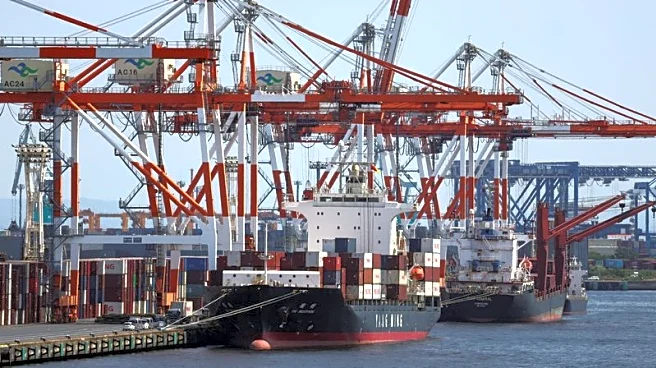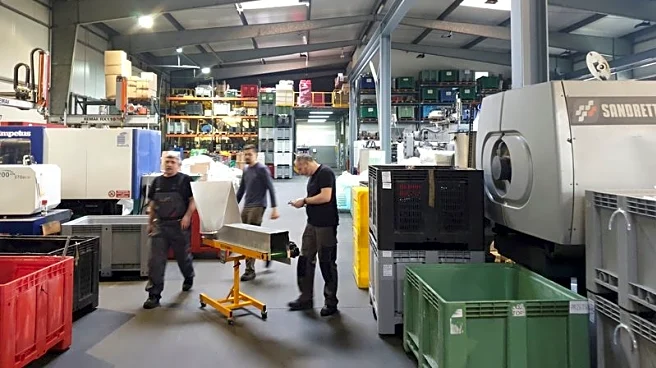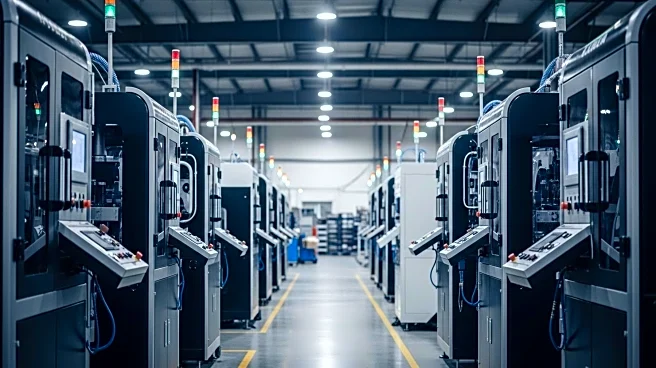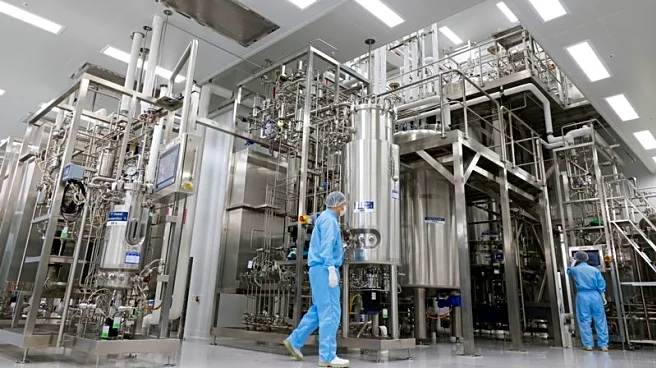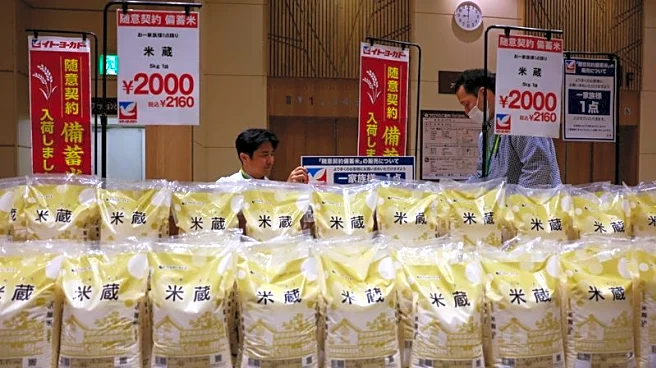What's Happening?
The manufacturing sector in the Philippines experienced stagnation in August, as indicated by the Purchasing Managers' Index (PMI) which recorded a slight decrease from 50.9 in July to 50.8. This index, reported by S&P Global, reflects the health of the manufacturing sector, with a reading above 50 indicating growth. Despite remaining above the threshold, the growth was described as historically subdued. Economist Maryam Baluch attributed this to a modest rise in demand. Factors such as higher U.S. tariffs on trading partners and global economic uncertainties have contributed to the cautious approach of Filipino producers. However, there was a seasonal boost from pre-Christmas demand, and foreign demand reached a seven-month high.
Why It's Important?
The stagnation in the manufacturing sector is significant as it highlights the challenges faced by Filipino producers in navigating global economic headwinds. The impact of higher U.S. tariffs and uncertainties in international trade can affect the competitiveness of Philippine exports, potentially leading to economic repercussions. The sector's performance is crucial for the country's economic stability, as manufacturing is a key driver of growth and employment. The cautious sentiment among manufacturers reflects broader concerns about maintaining competitiveness and managing costs, which could influence future investment and production decisions.
What's Next?
Manufacturers in the Philippines are likely to continue monitoring global economic conditions and adjust their strategies accordingly. Efforts to remain competitive by controlling pricing and managing costs will be crucial in regaining sales momentum. The sector may also focus on tapping into inventories and improving demand trends to offset challenges posed by external factors. The outlook remains optimistic, but manufacturers will need to navigate uncertainties carefully to sustain growth.
Beyond the Headlines
The subdued performance of the manufacturing sector may have long-term implications for the Philippine economy, particularly in terms of employment and investment. The ability of manufacturers to adapt to changing global trade dynamics and manage cost pressures will be critical in maintaining economic resilience. Additionally, the sector's response to higher tariffs and global uncertainties could influence policy decisions and trade negotiations in the future.


